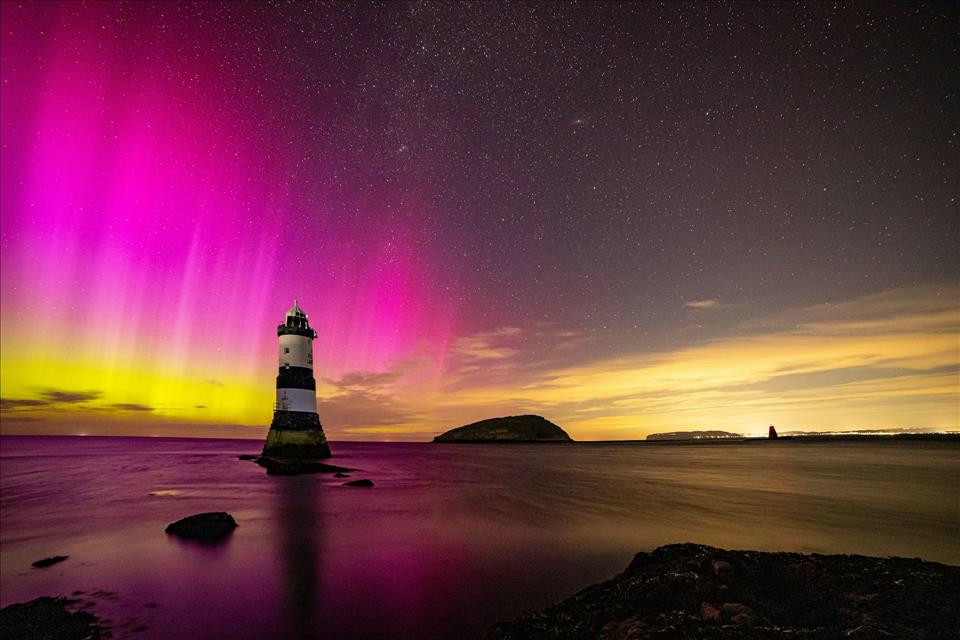
Northern Lights: How The Aurora Borealis Captivated 18Th-Century Minds
Today, we know these lights happen during geomagnetic storms . This is when charged subatomic particles, primarily electrons, collide with Earth's atmosphere. These particles are constantly released by the sun. But the frequency and intensity of auroras increase during periods of heightened solar activity.
The spectacle itself has long inspired cultural and spiritual interpretation. Centuries ago, people often regarded the aurora as a mysterious and ominous phenomenon.
Between the 14th and 19th century, a period known as the “little ice age” , weather and climate were generally cooler in the north Atlantic than today. Historical and literary sources from Wales reveal a lot about climate variability during this period. And these poems, songs, religious texts and personal diaries also tell us a lot about attitudes towards natural phenomena like the northern lights.
In an era when the night sky was largely free of artificial light, the aurora was an extraordinary sight. For many, it appeared as a divine sign.
Poet Robert Owen captured the sense of awe in 1749. He described the northern lights as a rhyfeddod hynod (strange wonder) and arwyddion cryfion Crist (Christ's strong signs). His words echo the reverence with which these lights were regarded, symbolising mystery and divine power.
People often projected spiritual or political significance onto natural events, especially during periods of upheaval or uncertainty. In 1745, for instance, auroral displays coincided with the Jacobite rebellion . This was a period of political tension between the Protestant monarchy and supporters of the deposed Catholic Stuart line. Owen's writings reflect the belief that the lights were a warning to uphold the Protestant faith.
Read more: What causes the different colours of the aurora? An expert explains the electric rainbow
The balladeer Hugh Jones interpreted the aurora seen during the American war of independence (1775–83) as a divine reminder that Britain should uphold the Protestant faith and make peace with America.
Portrait of William Williams Pantycelyn. Welsh Portrait Collection/National Library of Wales
As the 18th century progressed, scientific ideas began challenging traditional interpretations of natural phenomena like the northern lights. The religious leader and writer William Williams of Pantycelyn – best known for his hymn, Guide Me, O Thou Great Redeemer – captured both theological and scientific perspectives in his 1774 treatise on the northern lights.
It was published following spectacular auroral displays in 1770 which were seen across the globe from Japan to Spain . Williams presented the lights as evidence of the Gospel's success. He also connected them to the legitimacy of the second wave of Methodist evangelical reformation in Wales from 1762 onwards.
In his treatise, Williams also acknowledged some contemporary theories, speculating that the aurora might be related to“the new art” of electricity.
AlmanacsWales' 18th-century almanacs were annual publications combining calendars, weather lore and astrological predictions. Despite being ridiculed by 18th-century literary figures, Wales' popular almanacs were an important platform for bringing scientific knowledge to public attention.
They included explanations of astronomy, the ideas of Isaac Newton, and the discovery of Uranus in 1781. Almanacs also included explanations of natural phenomena like the northern lights.
The aurora borealis over Licswm in Flintshire, north Wales in October 2024. DGDImages/Alamy
In 1717, John Jones, a Welsh almanac compiler, described the aurora as a tarth (vapour) rising from the earth. This echoed the broader scientific discourse of the time . His explanatory essays also represent a shift towards a scientific understanding of the natural world and the emergence of a new science of meteorology.
Historical records provide a bridge between past and present. They demonstrate ways in which natural phenomena were understood and valued centuries ago. They help chart the history of science and reconstruct patterns of past solar activity. In the range of traditional and scientific explanations that they cover, Welsh historical records demonstrate an enduring fascination with the aurora borealis.

Legal Disclaimer:
MENAFN provides the information “as is” without warranty of any kind. We do not accept any responsibility or liability for the accuracy, content, images, videos, licenses, completeness, legality, or reliability of the information contained in this article. If you have any complaints or copyright issues related to this article, kindly contact the provider above.






















Comments
No comment